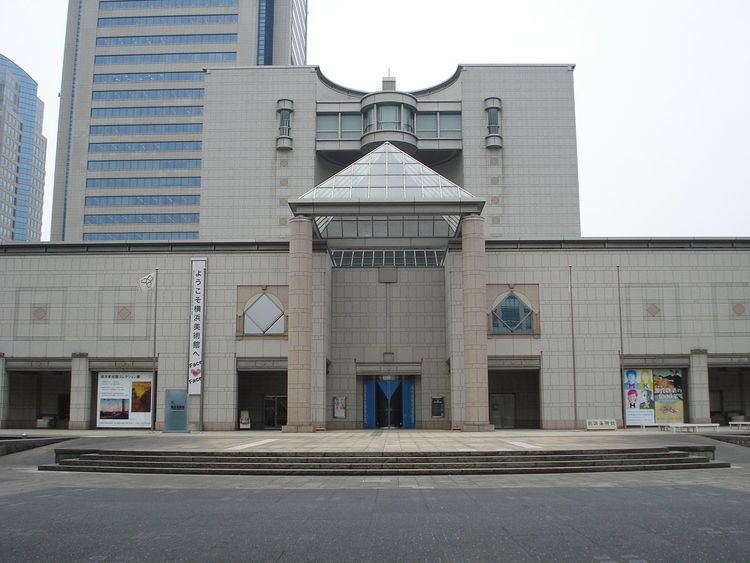Phone +81 45-221-0300 | Architect Kenzō Tange | |
 | ||
Hours Open today · 10AM–6PMSunday10AM–6PMMonday10AM–6PMTuesday10AM–6PMWednesday10AM–6PMThursdayClosedFriday10AM–6PMSaturday10AM–6PMSuggest an edit Artwork Madame Cezanne in a Striped Dress Profiles | ||
Takashi murakami mori art museum yokohama museum of art
Yokohama Museum of Art (横浜美術館, Yokohama Bijutsukan), founded in 1989, is located in the futuristic Minato Mirai 21 district of the Japanese city Yokohama, next to the Yokohama Landmark Tower.
Contents
- Takashi murakami mori art museum yokohama museum of art
- Nuformer 3d video mapping yokohama museum of art tokyo japan april 2011
- The collections
- Special exhibits
- The building
- References
Nuformer 3d video mapping yokohama museum of art tokyo japan april 2011
The collections
The museum has works by many influential and well-known modern artists including Constantin Brâncuși, Paul Cézanne, Salvador Dalí, Jimmy Ernst, René Magritte, Henri Matisse, Ossip Zadkine, and Pablo Picasso. Dadaist and Surrealist works are especially well represented.
The museum also features work by important Japanese artists, especially those with connections to Yokohama such as Imamura Shiko, Kanzan Shimomura, and Chizuko Yoshida. Other artists whose work has appeared at the museum include Kiyoshi Hasegawa, Yasumasa Morimura and Lee Ufan
Special exhibits
The building
The building which houses the Yokohama Museum of Art was designed by Kenzo Tange, the Japanese architect who won the 1987 Pritzker Prize for architecture. The structure is described as an "attractive and spacious building " that is "airy and well-lit".
The museum's main hall is 18 meters tall and is open to the second and third floors. A glass ceiling allows natural light into the space. Louvers control the light levels. It has superb acoustics, is often used for new art projects and cultural events, and is said to be a "particularly impressive" example of modern architecture.
The building is apportioned as follows:
First FloorSakuragicho Station provides to public transportation access to museum and the surrounding area by way of the Minatomirai Line and the Yokohama Municipal Subway Line.
